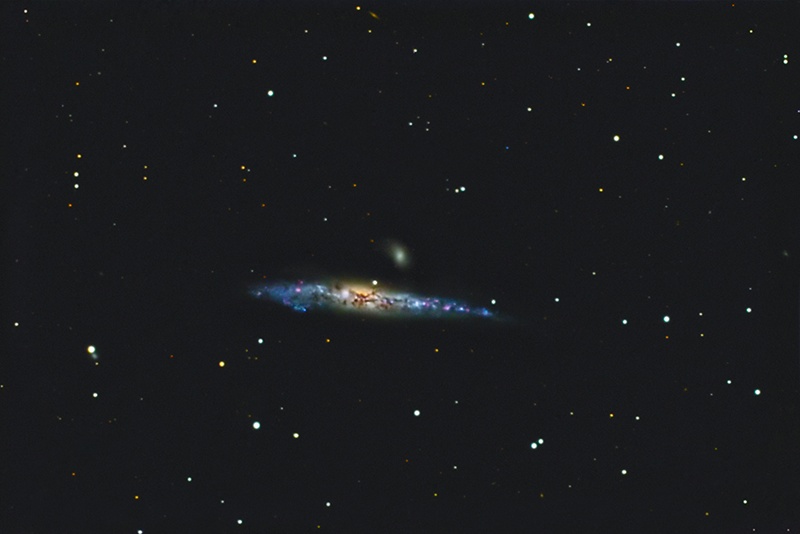I have always been fascinated with the stars. Now technological breakthroughs are giving us tools to explore the star systems around us, despite the unfathomable distances involved.
What we are finding is stranger than fiction. These include huge black holes, colliding galaxies, and planets with bizarre orbits. One source for information is Astronomy magazine http://www.astronomy.com. The photo is their “Picture of the Day” for May 14 — the Whale Galaxy in Canes Venatici (I don’t know where that is, either).
 Astronomy’s email newsletter of May 12, 2017 described some of the weirdest planets in our galaxy. For example —
Astronomy’s email newsletter of May 12, 2017 described some of the weirdest planets in our galaxy. For example —
— There is a gas giant that circles its star at such a great distance that it takes about 900,000 years to complete a single orbit. For years, astronomers thought this planet was a wanderer on its own. If you were able to visit, you probably couldn’t distinguish the parent star from all the others in the sky.
— One planet’s orbit skims so close to its star, a dying giant, that one day (in about 200 million years) it will be swallowed whole. By the way, the same thing will happen to Earth in about 5 billion years, as our Sun will begin to expand outward as its hydrogen fuel is exhausted. It’s rare for astronomers to see a planet this close to a red giant star, probably because planets in such orbits don’t last very long.
— Although few planets orbit their parent stars that tightly, some hug their stars so closely that it takes them just a matter of hours to complete an orbit. Astronomers call these ultra-short-period planets, usually gas giants that complete orbits in less than a day. So far, the champion is a planet 4000 light years away which orbits a millisecond pulsar in only 2.2 hours! Astronomers have deduced it has the same mass as Jupiter condensed into about two-fifths the space; it’s a ball of oxygen and crystalline carbon even denser than diamond. It may not be a planet at all; it’s probably the burned-out core of a companion star that’s become a white dwarf.
It sounds to me like our recent planet searches have given science fiction writers lots of new material to work with.
For the complete article on weird planets, visit http://www.astronomy.com/news/2017/05/guide-to-planets-in-the-milky-way .
